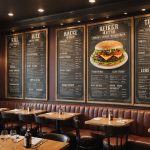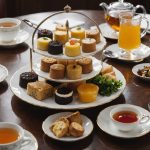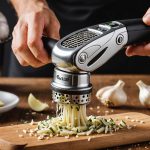The Ultimate Guide to Choosing the Perfect Pots for Slow Simmering Soups
When it comes to slow simmering soups, the right pot can make all the difference between a delicious, hearty meal and a disappointing, lackluster one. Whether you’re a seasoned chef or a kitchen novice, selecting the best pot for your slow cooking needs is crucial. Here’s a comprehensive guide to help you make the perfect choice.
Understanding Your Options: Materials and Their Advantages
When it comes to slow cooking, the material of your pot is one of the most critical factors to consider. Each material has its unique advantages and disadvantages.
In the same genre : Unlocking Convenience: The Ultimate Spice Rack Design for Effortless Access
Stainless Steel (Inox)
- Durability and Resistance: Stainless steel pots are known for their durability and resistance to rust. They are easy to clean and do not react with acidic foods, making them ideal for a wide range of recipes[1].
- Versatility: Stainless steel pots can be used on various heat sources, including gas, electric, induction, and even in the oven.
- Example: The Calphalon Digital Sauté Slow Cooker features a stainless steel vessel that is stovetop-safe, allowing for high-temperature searing before slow cooking[4].
Cast Iron
- Heat Retention: Cast iron pots are excellent at retaining heat, making them perfect for slow cooking at low temperatures. However, they can be heavy and require special maintenance, especially if they are not enameled[1].
- Example: Cast iron pots like those from Staub are prized for their ability to maintain humidity inside the pot, resulting in juicy and flavorful dishes[1].
Ceramic
- Non-Stick and Easy Cleaning: Ceramic pots are known for their non-stick surfaces and ease of cleaning. They are ideal for slow cooking with minimal fat and are often used in slow cookers.
- Example: The GreenPan Elite 6-Quart Slow Cooker features a ceramic insert pot that is both dishwasher-safe and easy to clean by hand[2].
Copper
- Excellent Heat Conductivity: Copper pots offer the best heat conductivity, allowing for precise temperature control. However, they are often more expensive and may be lined with other materials to prevent reactivity with food[1].
- Example: Copper pots, though less common in slow cookers, are highly valued for their performance in other cooking contexts.
Size and Capacity: Choosing the Right Fit
The size and capacity of your pot are crucial for slow cooking. Here are some considerations:
Small vs. Large
- Small Pots: Ideal for small batches or individual servings. For example, the Crock-Pot Mini Round Manual Slow Cooker is perfect for keeping a warm, melty dip at a party[4].
- Large Pots: Better suited for large families or for cooking in bulk. The Hamilton Beach Set & Forget 6-Quart Slow Cooker is a great option for larger quantities[4].
Shape and Form
- Wide Base: A wide base is beneficial for reducing sauces and cooking methods that require a larger surface area.
- Deep Pot: A deep pot, like the IMUSA slow cooker, helps prevent uneven cooking and is ideal for dishes like beans and spinach artichoke dip[2].
Compatibility with Heat Sources
Not all pots are created equal when it comes to compatibility with different heat sources.
In parallel : Discover the Top Coffee Pod Machines with the Most Diverse Beverage Options!
Gas and Electric Stoves
- Most pots, including stainless steel and cast iron, are compatible with gas and electric stoves.
- Example: The Calphalon Digital Sauté Slow Cooker’s stainless steel vessel is compatible with both gas and electric stoves[4].
Induction Cooktops
- Only pots made from magnetic materials, such as stainless steel, are compatible with induction cooktops.
- Example: The GreenPan Elite 6-Quart Slow Cooker’s ceramic insert is not induction-safe, but some stainless steel slow cookers are[2].
Oven Use
- Some pots, especially those made from ceramic or cast iron, can be used in the oven.
- Example: The GreenLife Cook Duo Slow Cooker features a ceramic pot that is both oven- and stovetop-safe[4].
Additional Features to Consider
When choosing a pot for slow cooking, several additional features can enhance your cooking experience.
Non-Stick Coating
- A non-stick coating can make cooking and cleaning easier.
- Example: The Calphalon Digital Sauté Slow Cooker has a highly effective non-stick ceramic coating[4].
Warm Function
- A warm function is useful for keeping food at a consistent temperature after cooking.
- Example: Many slow cookers, including the Hamilton Beach Set & Forget, come with a warm function to keep your soup at the perfect temperature[4].
Dishwasher Safety
- Being able to put your pot and lid in the dishwasher can save a lot of time and effort.
- Example: The GreenPan Elite 6-Quart Slow Cooker’s ceramic insert pot and glass lid are both dishwasher-safe[2].
Practical Insights and Actionable Advice
Here are some practical tips to help you make the most out of your slow cooking pot:
Preheating
- Preheat your pot before adding food to ensure even cooking.
- Tip: “Preheating the pot is crucial for achieving that perfect slow-cooked flavor. It ensures that the heat is evenly distributed and that your food cooks consistently,” says a seasoned chef.
Liquid Levels
- Ensure there is enough liquid in the pot to prevent drying out.
- Tip: “Always add a bit more liquid than you think you’ll need, especially when cooking at low temperatures. This helps maintain moisture and prevents the food from drying out,” advises a cooking expert.
Cleaning
- Clean your pot immediately after use to prevent food residue from hardening.
- Tip: “Cleaning the pot right after use is a must. It saves you a lot of effort in the long run and keeps your pot in good condition,” recommends a kitchen enthusiast.
Comparing Top Slow Cookers: A Detailed Table
Here is a comparative table of some of the best slow cookers on the market, highlighting their key features:
| Model | Capacity | Material | Heat Sources | Additional Features | Weight | Dimensions |
|---|---|---|---|---|---|---|
| GreenPan Elite 6-Quart | 6 quarts | Ceramic, Glass | Electric, Oven | Sous vide, slow cook, warm, dishwasher-safe | 12 pounds | 17.5 x 11.37 x 9.13 inches[2] |
| Hamilton Beach Set & Forget | 6 quarts | Ceramic | Electric, Oven | Warm function, dishwasher-safe, dial controls | 13.1 pounds | 12 x 17 x 11.9 inches[4] |
| Calphalon Digital Sauté Slow Cooker | 6 quarts | Stainless Steel, Ceramic | Gas, Electric, Induction, Oven | Stovetop-safe, non-stick coating, dishwasher-safe | 13.7 pounds | 19 x 13.4 x 10.9 inches[4] |
| IMUSA | 1.5 quarts | Ceramic, Glass | Electric | Low, high, warm settings, dishwasher-safe ceramic insert | 4.5 pounds | 7.9 x 9.1 x 7.9 inches[2] |
| Crock-Pot Mini Round Manual Slow Cooker | 1.5 quarts | Ceramic | Electric | Simple on/off controls, dishwasher-safe ceramic bowl | 2.5 pounds | 7.5 x 7.5 x 7.5 inches[4] |
Choosing the right pot for slow simmering soups is a personal decision that depends on your cooking style, the type of recipes you frequently make, and your kitchen setup. Here are some final thoughts to keep in mind:
- Material Matters: The material of your pot can significantly impact the quality of your slow-cooked meals. Choose a material that aligns with your cooking needs and preferences.
- Size and Capacity: Ensure the pot is the right size for the quantities you typically cook. A larger pot may be unnecessary if you’re cooking for one or two people.
- Compatibility: Check the compatibility of the pot with your heat sources to avoid any inconvenience.
- Additional Features: Consider the additional features that can enhance your cooking experience, such as non-stick coatings, warm functions, and dishwasher safety.
By carefully considering these factors and choosing the right pot, you’ll be well on your way to creating delicious, slow-simmered soups that will become the centerpiece of your kitchen. Happy cooking











